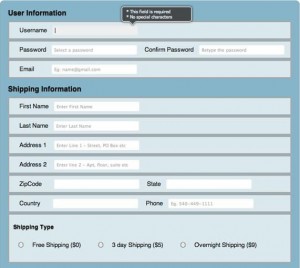Thanks to part 1, I have your attention. Good.
Let’s cut right to the chase, price leadership appeals strongly to our inner calculators. It is universal (rational in the words of the economist) when products are identical, to choose the lowest priced item. Walmart is the master of this strategy through tactics ranging from featuring prices prominently in their merchandising, running their price rollbacks ad campaign, and (in legend) fleecing employees and suppliers. Similarly, commodities like gasoline and groceries are inner calculator plays by subverting aspects of quality and service to the almighty price.

FedEx created an industry by appealing to the inner calculator. “If it has to be their overnight,” the saying goes. FedEx marketed their 10:30AM next day delivery service level agreement and backed it with a money-back guarantee. So we know the FedEx delivery time, but what is the price for their service? I don’t have a clue, but know it’s a lot more than $0.39 for a first class stamp. We each use our inner calculator to determine if the value of overnight delivery is substantial enough for FedEx.
The inner calculator drives software buyers to value quality and service more than price. (Innovation is also a key factor, but that is a different topic for a different day.) As a result, selling on price alone is rare in the software industry. Bill Gates’ and Larry Ellison’s personal wealth are the poster children of a software industry built on quality, service and innovation, not price. On the buy side, countless IT professionals, from programmers to CIOs, have build careers and nest eggs on their ability to translate the principles of quality, service and innovation into specific business solutions.
Even with the emergence of open source software, quality and service continues to trump acquisition cost. Open source makes technology free to acquire. Importantly, the projects and businesses that succeed in open source create a long term value advantage well beyond the initial acquisition cost savings.
Every time I look at an IT department budget, the number that sticks out is labor costs…employees. Smart CIOs know that is where the value is. They also know that the software they acquire is a rent payment on the brains of smart programmers working for software companies. IT professionals who listening to their inner calculators know that open source may be “rent free” at time of acquisition, but it is not “cost free” over the useful life of the technology.
While smart labor is in IT, the cost areas that make or break a business are in ongoing operations. Automating critical but repetitive functions such as processing orders, monitoring quality, and routing information are prime areas where IT applies smart labor to create long term value for business. After all, the most efficient bank teller cannot compete with the speed, accuracy or cost of operating a banking portal for displaying bank balances.
Focusing the Inner Calculator on Value
While price is always a factor for the inner calculator, its not the most important number. The most important number is the value assigned to the features, services and innovation of a product offering. A customer that precisely knows the value associated with a potential purchase or by automating a business process is the one that is ready to put the inner calculator to use…and to buy something. And Walmart, FedEx, Oracle, Microsoft, and Red Hat all have mastered selling to the inner calculator of IT executives to the delight of shareholders and customers alike.




 In the olden-days of Handshake 1.0, a handshake was a precursor of bilateral communication. A protocol of acknowledging a peaceful relationship and mutual trust with the idea of building upon the status quo. An initial meeting between a vendor and a prospective customer. A politician building a coalition. A suitor wooing a debutante. Two or more people carve out a sacred space for a live interaction in the hopes of a mutually satisfactory outcome. Stakes are reasonably low with a first handshake; and the budding relationship can quickly go in any direction. Compare this to two people who pass in the street with nothing more than a glance. No rapport. No communication. No goals for advancing an agenda.
In the olden-days of Handshake 1.0, a handshake was a precursor of bilateral communication. A protocol of acknowledging a peaceful relationship and mutual trust with the idea of building upon the status quo. An initial meeting between a vendor and a prospective customer. A politician building a coalition. A suitor wooing a debutante. Two or more people carve out a sacred space for a live interaction in the hopes of a mutually satisfactory outcome. Stakes are reasonably low with a first handshake; and the budding relationship can quickly go in any direction. Compare this to two people who pass in the street with nothing more than a glance. No rapport. No communication. No goals for advancing an agenda. What is interesting is what happens next: a fast exit or an attempt at rapport building. Credibility and effective design by the site owner conspires with desire and perhaps laziness by the visitor to earn a second and a third click.
What is interesting is what happens next: a fast exit or an attempt at rapport building. Credibility and effective design by the site owner conspires with desire and perhaps laziness by the visitor to earn a second and a third click.